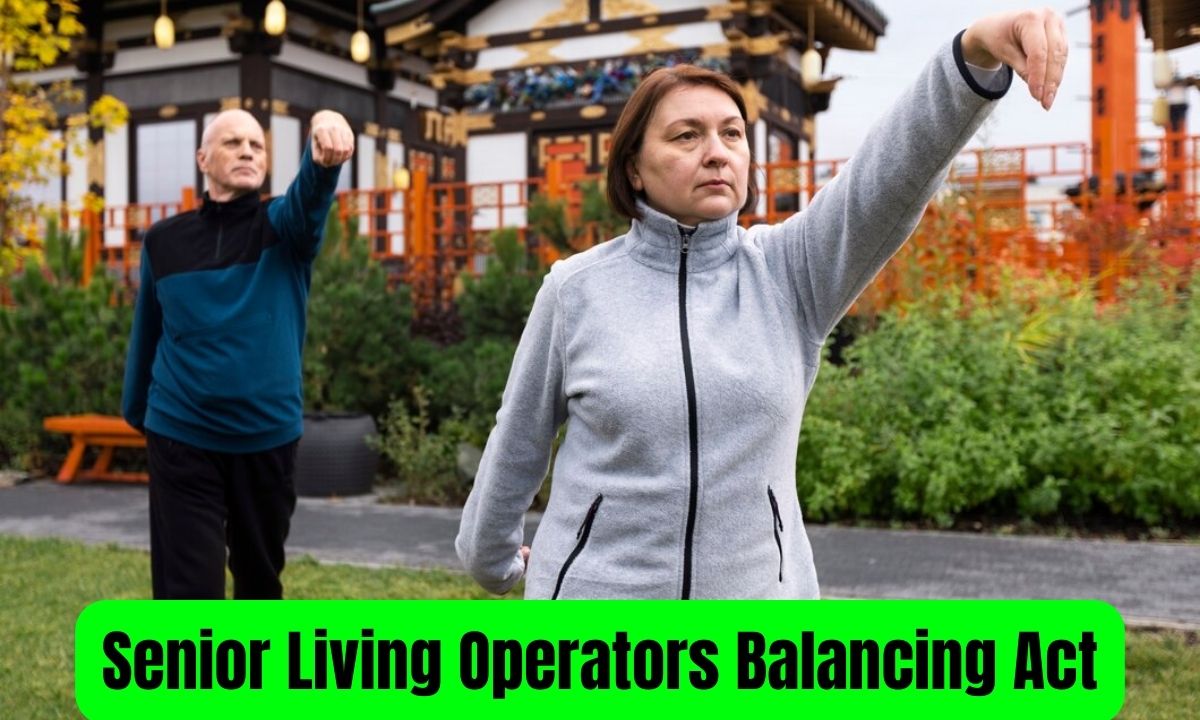Introduction:
Senior living operators Balancing Act while facing the highest intensity levels with declining margins in the industry. Discover innovative strategies to effectively meet these challenges.
Increasing resident acuity is impacting senior living’s margins, and in response, operators are becoming innovative to improve resident care, although challenges remain.
In recent years, especially with the pandemic, operators have said residents come to senior living communities needing more care than in previous times. This impact is shaping the future of the senior living industry and changing the dynamics of the senior living sales cycle, putting pressure on operators’ lower margins.
“There is a married relationship between intensity and margin,” Eskaton CEO Sherry Peffer told SHN.
Facing depressed margins, Eskaton and other operators, including Senior Lifestyle, Integral Senior Living, Cozier, Pegasus Senior Living, Distinctive Living, Northbridge Cos. and Presbyterian Homes & Services are taking different approaches to improve operating margins, adjusting levels of care, and improving staffing to generate more appropriate revenue.
Senior Living Operators Balancing Act

Margin improvement shaped by acuity, care structure evolution
As residents move into communities with greater care needs, operators have attempted to reshape care structures to catch those who previously fell out of the way among the broader tiers of care. At the traditional senior living facility, Chicago-based Senior Lifestyle has expanded operating margins by more than 12% over the past three years, according to data from increased occupancy, rate increases, and reduced staffing costs, according to Senior Lifestyle Vice Chairman and Chief Investments. Officer Jerry Frum.
“It’s all about getting paid for the care that we provide and accurately tracking those care levels,” Frum said. “It’s essential, but it’s not always easy and you have to stay on top of our assessments to keep your acquisitions on track and have those difficult conversations with families.”
Carlsbad, Calif.-based Integral Senior Living has seen similar advancements in operating margins since 2021, and CEO Colette Gray said the primary drivers came from occupancy gains and higher market rates. As salary increases and spending support have been slowed by disappointing pressures, Gray said ISL is getting closer to its pre-pandemic 40% margin range but is “not quite back.”
“This is the new normal,” Gray said of resident intensity impacting margins. “You will have more intensity, you will need additional staff but you will also need to change your value propositions. So it all goes into a table and it’s about managing it.”
Freehold, New Jersey-based Distinctive Living has captured additional care revenue while taking advantage of greater acuity by adding 10 different options for residents. The effect is that the operation has been optimized to provide the highest level of care, according to CEO Joe Jedlawski.

After hitting “rock bottom” in margins in 2021, Jedlawski highlighted that the company’s margins have stabilized between 25% to 33% in assisted living and memory care properties. Independent living properties, as seen within the industry, maintain strong margins ranging between 28% to 45%.
“We needed to analyze every component of our business model so that we could see these stable margins, it’s taken us a few years,” Jedlawski told SHN.
Dallas, Texas-based Pegasus Senior Living has understood the pace of increasing acuity, which CEO Chris Hollister called “fundamental,” by focusing on residents’ assessments to bill residents appropriately and maintain margins and care revenue. to keep.
Increasing transparency between Dwarka customers and operational care staff creates a “balanced” value proposition and sets the stage for capturing additional care revenue, says Northbridge Cos. According to CEO Jim Coughlin. Company leaders use proprietary training to educate staff on how to keep up with new care needs for residents. Coughlin added that the organization has had success in balancing workloads and reducing turnover.
“We can track that and collect that data and get paid for it,” Coughlin said. “It’s a balancing act with our caregivers, and it really develops a partnership between families and staff who are given cross-sectional data to start these conversations.”
Tailoring operations to support rising acuity
Over the past few years, senior living providers have adopted innovative offerings to improve resident lifestyles and healthcare features, as consumers demand more choice-directed programming that emphasizes independence.
As care needs increase, so does the need for additional staff resources to catch up with forecasted demand, from care staff to additional sales staff to catch up with forecasted demand, says Gottfried Erns, chief operating officer of Cozier Management. According.
As residents are taking longer to move into senior living communities, the length of stay continues to shorten, even as changes in consumer preferences bring new approaches to programming. This comes as the average age of Cozier assisted living residents jumps from 81 years old in 2021 to 85 years old in 2024.
“We had to pivot our efforts to focus on individual health and a more individualized approach to managing resident acuity,” Erns said. “So we needed to present some of our activities and programming at the intensity levels that we could provide.”
Taking a “niche cart” approach to reduce required staffing levels in cozier communities, with a new “niche cart” level care structure, the organization drove new revenue while improving resident care. This has helped Cozier Communities customize care plans for residents and improve bottom-line performance, Erns said.
In cozier communities, new care models have brought care margins to “neutral” and “at least the care department is going to be cost neutral” in the reality of higher acuity to come. Margin pressure eased in 2021 and carried into 2022, but showed improvement over the last year.
“2024 is about being strategic about how our margin optimization platform approaches where different markets trade, and specifically taking into account the factors that will impact margins in 2024,” Erns said.
Kozir’s margin goals for high-acuity settings are: 40% in assisted living, 25% in memory care, and 50% in independent living, Erns added.
For agnostic senior life providers, the pursuit of higher margins is just as challenging, impacted by trends of the same intensity impacting their private-pay relatives.
According to Michael Bingham, PHS senior vice president for Presbyterian Homes and Services, gross margins in 2024 are expected to support new growth and its affordable housing locations. This comes after negative gross margins in 2022 and turned positive last year.
“We expect 2024 to be an extremely strong year,” Bingham added. “If you do a good job, if you have higher intensity assisted living and memory care you can capture that through the rate structure, but it’s hard but the fact is that we have higher intensity assisted living and memory care. “We are seeing an increase in demand for.”
The Eskaton, Carmichael, California-based organization, a Gnostic senior living provider, manages fixed costs related to staffing needs in its home state. By partnering with third-party health providers,

Conclusion;
For senior living providers, it is difficult to navigate rising intensity and falling margins in most sectors. In this struggle, operators have adopted new measures to improve their services and try to stabilize their margins. It is a challenging journey, that tests their abilities, but it also provides them with new opportunities. Ultimately, this proves that renovation and growth to improve senior residence services through their advancement is a balanced path for business.





